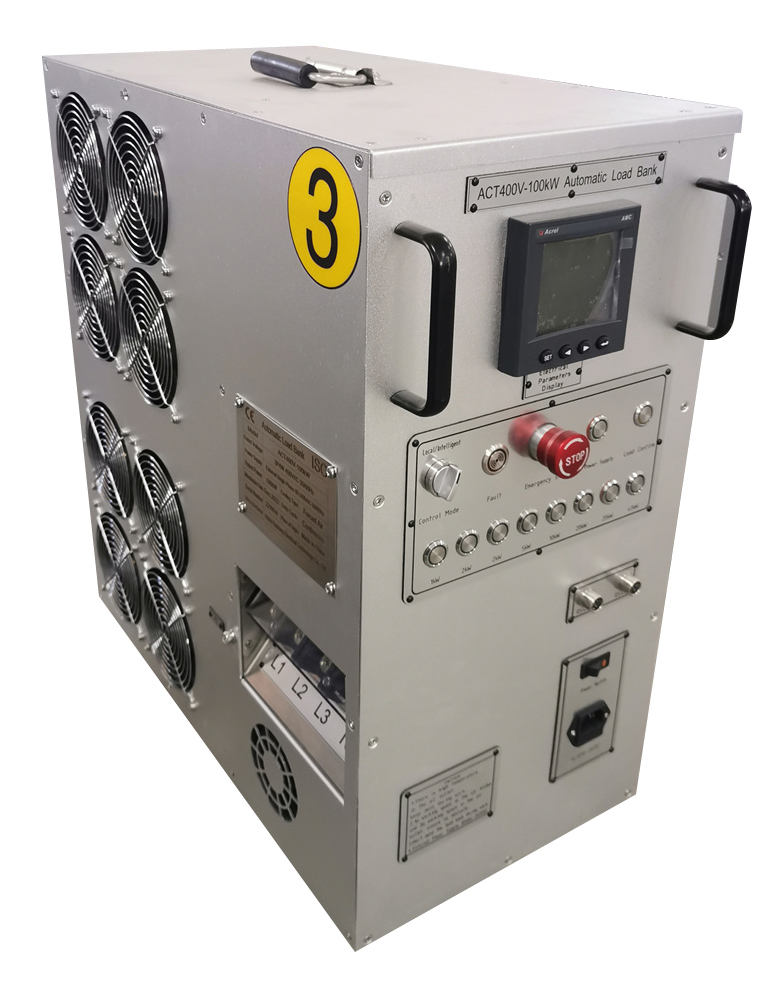The application of load banks in the new energy field: Core tools in the testing of photovoltaic and energy storage systems
Time:2025-08-09
In the global wave of energy structure transformation towards clean and low-carbon, photovoltaic and energy storage systems, as core components of the new energy field, their stability, safety and energy efficiency performance directly determine the quality of clean energy promotion. As a specialized device capable of simulating various types of electrical loads, the load bank is becoming an indispensable core tool in the entire process of research and development, production, and operation and maintenance of photovoltaic and energy storage systems, thanks to its precise load regulation capabilities and comprehensive testing functions, ensuring the reliable operation of new energy equipment.
The power generation efficiency and stability of photovoltaic systems are highly susceptible to natural conditions such as light intensity and environmental temperature, which places extremely high demands on the performance testing of the systems. The load bank plays a key role as a "dynamic load simulator" in photovoltaic system testing. During the factory testing stage of photovoltaic modules, the load bank can simulate the power load under different light intensities. By precisely adjusting the load power, it can detect the output characteristics of the modules under standard and extreme working conditions, helping manufacturers screen out high-quality products with conversion efficiency meeting standards and low attenuation rates. In the testing of photovoltaic inverters, the value of load banks is more prominent - they can simulate the full range of load changes from no-load to full-load, and even complex nonlinear loads, thereby verifying the voltage regulation accuracy, harmonic suppression capability and dynamic response speed of the inverter, ensuring that the inverter can still operate stably when the power grid fluctuates or the load changes suddenly Avoid power generation losses caused by equipment failures.
With the rapid development of energy storage technology, energy storage systems have become an important support for solving the intermittent and fluctuating problems of new energy, and load banks also play an irreplaceable role in the performance verification of energy storage systems. In the cycle life test of energy storage batteries, the load bank can precisely control the load power according to the preset charge and discharge curves, simulate the operating state of the battery under different depth discharges and different rate charge and discharge conditions, and evaluate the service life and capacity attenuation characteristics of the battery through long-term cycle test data. For energy storage converters (PCS), load banks can simulate various complex load conditions on the grid side or load side, such as inductive loads, capacitive loads, nonlinear loads, etc., to test the active power regulation, reactive power compensation, harmonic control and other performance of the converter, ensuring that the energy storage system can operate stably after being connected to the grid and improving the power supply quality of the grid.
Compared with traditional testing methods, load banks have significant advantages in the application of the new energy field. Its high-precision load regulation capability enables power coverage from milliwatt level to megawatt level, meeting the testing requirements of photovoltaic power stations and energy storage systems of different scales. The rapid dynamic response feature can track load changes in real time, accurately capture the transient performance of the system when the load suddenly changes, and provide key data for equipment optimization. The intelligent data analysis function can record the parameters such as voltage, current, power and temperature during the testing process in real time and generate analysis reports, significantly improving the testing efficiency and data reliability. In addition, some load banks also have grid connection testing functions, which can simulate abnormal conditions such as grid voltage fluctuations and frequency offsets, verify the low-voltage ride-through and high-voltage ride-through capabilities of the new energy system, and ensure that they meet the grid access standards.
With the continuous development of the new energy industry, the scale of photovoltaic and energy storage systems is constantly expanding, and the technology is constantly upgrading. The requirements for testing equipment are also increasing day by day. In the future, load banks are evolving towards modularization, integration and intelligence. The modular design enables flexible combination of multiple load banks, meeting the testing requirements of higher power. The integrated test platform highly integrates the load bank with the data acquisition and analysis system, simplifying the test process. Intelligent functions are realized through Internet of Things (iot) technology for remote monitoring and automated testing, further enhancing the efficiency and accuracy of testing. It can be foreseen that as a core testing tool in the new energy field, the load bank will play a more important role in promoting technological innovation in photovoltaic and energy storage and ensuring the reliable operation of systems, injecting strong impetus into the high-quality development of the global new energy industry.
News Recommendation
-
 2024-09-11
2024-09-11TRIUMPH LOAD EXHIBITING AT Enlit Europe 2024 -BOOTH 7.H08
-
 2023-04-21
2023-04-21TRIUMPH LOAD EXHIBITING AT DATA CENTER WORLD GERMANY 2023-BOOTH F909
-
 2023-04-06
2023-04-06TRIUMPH LOAD EXHIBITING AT ELECTRIC POWER TECH KOREA 2023 – Booth G109
-
 2022-05-05
2022-05-05What is the role of ac load bank for power supply?
-
 2022-05-05
2022-05-05What is the role of the load bank?


